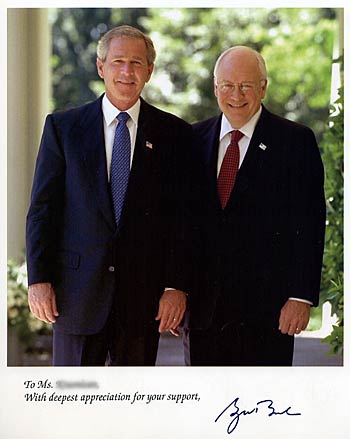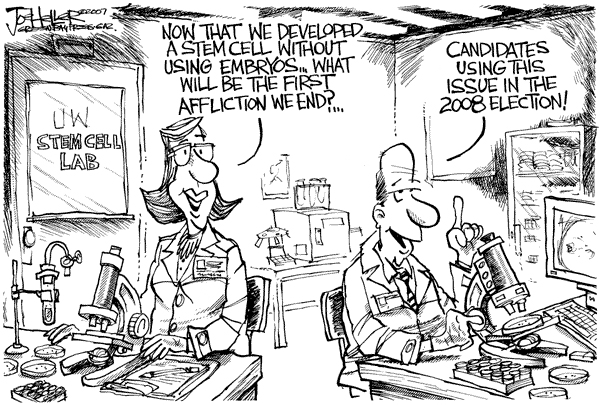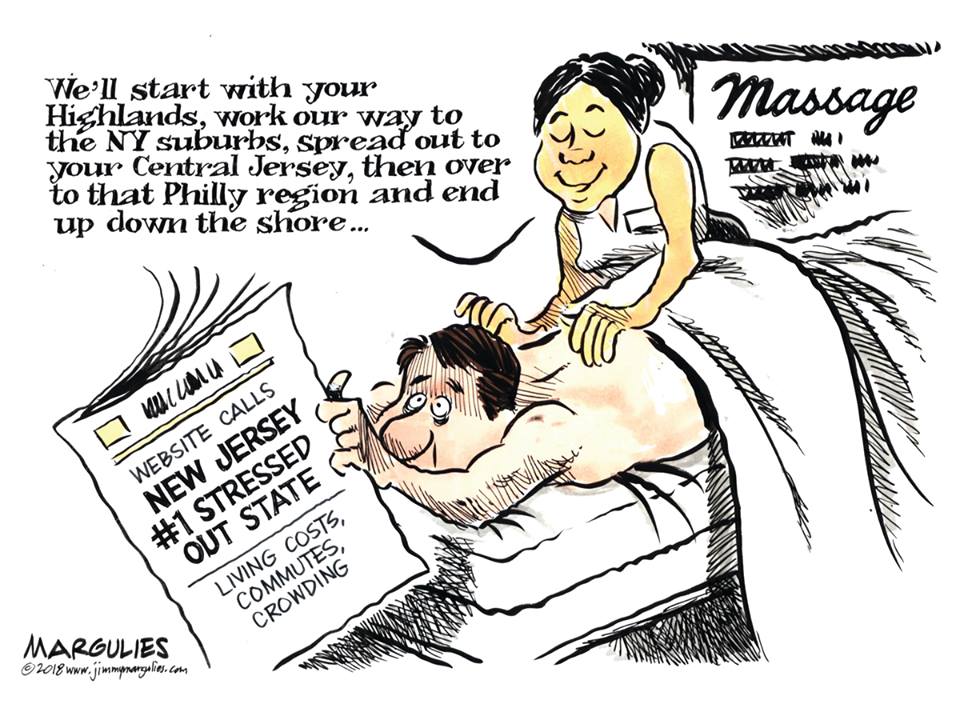Western Land and Resource Management
Source: https://jeb2016.com/western-land-resource-management/The American West is a land of wonder and opportunity. The West is a destination for those seeking the serenity of the outdoors as well as home to many families that work the land, whether ranching, mining minerals or developing renewable or fossil energy. As in so many other parts of our economy, the federal government’s role in managing these resources is overreaching, priorities are misplaced, and it is harming people in the region.
People in the West feel the impact of federal decision-making more acutely than those in the rest of the nation. Of the 635 million acres owned and managed by the federal government, 582 million acres — 90 percent — are in the West, including Alaska. In the 11 most Western states, excluding Alaska and Hawaii, the federal government controls nearly half the land (see map below). For instance, over 80 percent of Nevada is federally-owned. By contrast, the federal government owns 4 percent of all the remaining 37 states further east.

Increasingly, the federal government does not treat Western states, local governments, tribes and land owners as equal partners. Under the Obama Administration, federal land management is characterized by restrictive regulations, more land use constraints, more land acquisition, more “analysis paralysis,” and more “sue and settle”-driven policies.
This relentless overregulation has undermined the trust between Western communities and the federal government. It must be restored. Washington, DC needs to acknowledge that people who live on the land in the West are the best stewards of the land. Federal holdings should be valuable recreational and economic assets, not a liability to economic freedom and growth.
I will fix the relationship between the federal government and the West. I propose four principles, backed up by specific policies, to rebuild trust.
Full and Equal Partnership
Western communities need an equal partner in the federal government. Washington, DC’s decisions from afar are too often based on the baseline assumption that states and tribes care less about the environment than federal officials. That is false. Decisions relating to lands, rivers and lakes, and wildlife affect local people’s livelihoods, the places their families camp or hunt and the water they drink. No one has a more vested interest in stewardship of our natural heritage than those that coexist with it.
For instance, as governor, I secured a full and equal partnership with the federal government in restoring the Everglades. It is the world’s largest intergovernmental watershed restoration effort and the most ambitious ecosystem restoration effort in history. I brought stakeholders, businesses and conservationists together with state and federal agencies, forging a fair and equal coalition to ensure the Everglades would be conserved for generations to come.

In order to fix this relationship I will:
- Support moving the Department of the Interior headquarters from Washington, DC to a location closer to the lands it manages and the people it most affects, such as Denver, Salt Lake City or Reno. Historically, presidents export a Secretary of the Interior from the West to Washington, DC. It is time to import the Department from Washington, DC to the West;
- Direct agencies, consistent with law, to give deference to states to determine what land uses are sustainable and most compatible for citizens who live in a particular area;
- Practice dynamic and partnership-based decision-making starting with convening a meeting of Westerners (e.g., Western Governors, tribal leaders and other elected officials) to agree on a better framework for cooperative decision-making including, for instance, having a more inclusive process for establishing National Monuments which can lock up land from multiple uses; and
- Adopt “states-first” wildlife conservation policies that provide more deference to state plans for protecting and restoring species’ populations such as the greater sage grouse.
Take Better Care of What We Have
The federal government owns about half of the west, yet it continues to acquire more land. In some cases these acquisitions make sense, such as inholdings or to promote recreational access, but in other cases they erode local tax bases and constrain growth.
Washington, DC needs to acquire less and take better care of what it already owns. Too much of the government’s property is a mess and our lands are sick. For instance, the National Park Service turns 100 years old in 2016, but we have a maintenance backlog in our national parks of $11.5 billion. These are our national treasures, but over a third of our national parks’ trails are in poor condition, over two dozen bridges are “structurally deficient” and 90 percent of the national parks paved roads are in “fair” or “poor” condition.
Washington, DC needs to acquire less and take better care of what it already owns.
Worse, a lack of active management of our forests and rangeland has led to deadly wildfires that are growing in number, size and intensity. More than nine million acres of forests and rangeland were affected by wildfires this year, an area the size of New Jersey and Connecticut combined. Forests and rangeland are thick with fuel. This risk can be reduced by conducting prescribed burns, more actively managing invasive plants, removing dead wood and harvesting timber.
In order to rebalance our priorities, as president I will:
- Back the temporary modification of the Land and Water Conservation Fund to better consolidate and maintain federal assets by:
- Providing our crown jewels — the national parks — with a 100th anniversary gift by supporting the redirection of a portion of acquisition funds to reduce the backlog of maintenance projects in our national parks;
- Targeting federal acquisition funds at inholdings and enhancement of existing lands and outdoor recreation opportunities; and
- Supporting the permanent reauthorization of the Land and Water Conservation Fund to provide greater certainty of funding for states; and
- Convene the nation’s top experts on forest health to develop a new national wildfire policy and direct my cabinet to expedite the review of activities that would decrease wildfire risk.
Shared Use of Resources
The Obama Administration has increasingly attempted to grab state authority and constrain the acceptable uses of federal lands. This needs to be reversed. We can conserve our natural resources and create economic growth while avoiding the pitfalls of federal bureaucracy.
When it comes to the West, the federal government needs to demonstrate extra sensitivity to the decisions that can block economic opportunity for people whose livelihood is tied to the land. Onerous and overreaching rule-making, “paralysis by analysis” and “sue and settle” are all methods use to strangle multiple use projects, such as water infrastructure, grazing, timber, mining, renewable and fossil energy development and outdoor recreation. The overreaching Waters of the United States rule, for instance, has created great uncertainty among those families that rely on the land for their livelihood. The rule, for example, places up to 99 percent of Montana’s land under the Environmental Protection Agency’s jurisdiction.
When it comes to the West, the federal government needs to demonstrate extra sensitivity to the decisions that can block economic opportunity for people whose livelihood is tied to the land.
Even when Washington, DC does have clear authority to regulate, it is overbearing. Minerals and metals mined from Western lands are necessary for making computers, cell phones and structural steel. But an overly burdensome federal permitting process means a new mine takes seven to ten years before development can begin. That alone moves responsible mining operations to other parts of the world. Federal bureaucracy should not be denying Westerners jobs.
To help reinvigorate the West I will:
- Reaffirm western water rights by protecting against federal encroachment of surface and groundwater resources and stopping the Waters of the United States rule in its tracks;
- Expedite funding, studies and permitting for water infrastructure, especially water storage projects, as one way to address historic drought conditions; and
- Support a “two is enough” permitting policy whereby projects on federal lands requiring federal approval must be permitted or rejected within two years unless there are unusual circumstances. (This expands the scope of a previously announced regulatory reform proposal.)
Sportsmen and Outdoor Recreation Access
Americans should be encouraged, not discouraged, to fish, hike, hunt, camp and recreate on Federal lands. Yet, millions of acres of public land in the West are inaccessible to the public due to historic checkerboard land ownership patterns and inadequate points of entry. Importantly, lack of access to lands is a primary reason that hunters stop participating in this traditional sport.
I understand this. As the governor of Florida, I instituted a “no net loss” of sportsmen’s access. I also signed a law ensuring Florida citizens had the right to carry firearms for lawful purposes while in national forests and state parks.
To continue to encourage families to seek out and enjoy outdoor activities, as president I will:
- Establish a national goal of “no net loss” of sportsmen’s access, as I did in Florida; and
- Support a set-aside in the Land and Water Conservation Fund for funding easements, acquisitions or other projects that provide access for hunting, angling and other recreational activities on landlocked federal lands.
A New Relationship with the West
Conservation implies that people can actually access and responsibly use our land and water, but this administration has consistently made more resources off-limits to human beings. They are not listening to Western communities and the individuals who know Western lands best. As president, I will fix that relationship and propose policies that will show greater respect for local values and needs. I will increase, rather than suppress, opportunity for Western families.
Cybersecurity
Source: https://web.archive.org/web/20160204080410/https://jeb2016.com/cybersecurity-2/?lang=en
The Internet has transformed everyday life for people, revolutionizing communications and how Americans interact with each other and the world. The Internet’s impact on economic growth has likewise been profound. U.S. manufacturers reported e-commerce shipments were $3.3 trillion in 2013. According to one report, from 2004 to 2009, the Internet accounted for 15% of GDP growth.
Yet, for all of the Internet’s transformational power, its future rests in part on one critical factor—cybersecurity. If people have no confidence their information will remain safe online, they will—quite simply—be less willing to use the Internet, thereby jeopardizing future growth possibilities.
…for all of the Internet’s transformational power, its future rests in part on one critical factor—cybersecurity.
Unfortunately, a series of high-profile cybersecurity failures and the Obama administration’s feeble response to the growing threat have demonstrated real vulnerabilities in government and private systems, eroding public confidence in both the government and even the Internet itself. In June, I published some thoughts on cybersecurity, and at many town halls across the country I hear concerns from Americans about this threat.
This is an issue that gravely needs presidential leadership. Ultimately, we need Internet security, and a strong tech industry that can be leveraged to the public’s benefit, in order to achieve high, sustained economic growth that will benefit everyone. Let’s not mince words: in order to achieve 4% growth and the 19 million jobs that come with it, we need a vibrant and secure Internet. Here is my plan to achieve that, starting with tackling the cybersecurity challenge.
1. Place a Command Focus on Cybersecurity.
We need to recognize the reality that today we are under cyberattack and we are not keeping up with the threat. We also need to identify clearly the mission for government and the private sector: to work together to ensure the security of the Internet. The rapid expansion of information technology in the past several decades, coupled with both the open architecture of the Internet and poor cybersecurity practices, have contributed to a dramatic rise in cyberthreats to the nation. Last year, 60% of all targeted attacks struck small and medium-sized organizations, which often have fewer resources to invest in cybersecurity. In 2014, five out of every six large companies were targeted with spear-phishing attacks, a 40% increase over the previous year. Attacks against small and medium-sized businesses increased 26% and 30%, respectively. And these are just the attacks we know about. Many penetrations go unnoticed or unreported by companies that are victims of these attacks.
Effective cybersecurity starts with all of us — individuals, businesses, and the government—recognizing the importance of Internet security and our responsibility to help ensure its robust defense. Effective cybersecurity depends in large part on the protective measures one takes before a cyberattack. If we do not make cybersecurity a priority, we will continue to see major breaches and damaging attacks. Cybersecurity should be considered a critical element of our national defense and economic well-being.
Cybersecurity should be considered a critical element of our national defense and economic well-being.
2. Restore Accountability within the Federal Government.
The government should lead by example. We need presidential leadership to get government to take the cybersecurity threat more seriously, fix the vulnerabilities of government systems, and hold government leaders accountable for the security of information entrusted to their care. It is easy to give a speech about cybersecurity. What we need is unwavering leadership and determined implementation, including a concerted effort to work with Congress.
The intrusion into the Office of Personnel Management (OPM)—the human resources department of the U.S. Government—illustrates the cultural failure of the Obama administration to take these threats seriously. The OPM systems contain millions of personnel records—many of which included an intrusive and sensitive personnel questionnaire. OPM officials knew this data was valuable, sensitive, and vulnerable, but failed to take basic steps to protect it.
We need to change the culture of government, which is impossible absent presidential leadership. Leadership means not hiring political hacks or cronies for critical positions that involve cybersecurity. It also means holding executive branch officials accountable for their failure to prioritize cybersecurity and protect the networks under their care. The people who protect our systems are just as important as the technology itself.
The people who protect our systems are just as important as the technology itself.
The President also cannot allow cabinet secretaries and senior officials to violate rules and procedures meant to protect classified and national security-related government communications. It should not be too much to ask government officials to abide by the laws and rules in place to safeguard our national security. Secretary Hillary Clinton’s growing email scandal highlights reckless behavior by officials entrusted with some of our nation’s most sensitive secrets.
3. Increase U.S. Intelligence and Law Enforcement Cybersecurity Capabilities and Strengthen International Cooperation.
We need to preserve and enhance the capabilities of the U.S. Intelligence Community and law enforcement to identify, deter, and respond to cyberattacks as part of a national strategy to protect the country. This starts by undoing the damage that sequestration has done to the Defense Department and Intelligence Community and restoring funding to them. The National Security Agency and Cyber Command are on the frontlines of defending the United States against cyberthreats. We must stop demonizing these quiet intelligence professionals and start giving them the tools they need. The Federal Bureau of Investigation also needs more resources to fight back against the onslaught of cybercrime.
In addition, we must reform a convoluted acquisition process that imposes years of delays and inefficiencies in procuring new cybersecurity systems. The Defense committees of Congress are already working on acquisition reform—the President should work with these committees and others to ensure that a byzantine acquisition process is streamlined for cybersecurity defense technologies. The government could build upon some of the lessons learned by Secretary Bob Gates’ efforts to reform parts of the inefficient and costly defense acquisition process.
The President should also prioritize cybersecurity in discussions and agreements with our allies and partners around the world. No one country can solve the cybersecurity problem, which is a global challenge. The need to protect sensitive systems from bad actors is a modern-day equivalent of securing the world’s oceans for freedom of navigation, and just as nations came together to protect the seas, they should do so to secure the Internet. At the same time, the United States must retain a strong leadership position in Internet governance. For example, we should maintain oversight of the Internet Corporation for Assigned Names and Numbers (ICANN), which manages the Internet’s domain name system.
We must also hold to account those who are stealing our nation’s intellectual capital. Efforts to expose, prosecute, and in some cases retaliate against these actors will raise the cost of conducting such attacks and increase deterrence of future attacks. Such deterrence will be stronger if we work with partners to establish international rules of the road and get them to establish the legal framework necessary to prosecute cybercriminals.
4. Create Public-Private Partnerships to Improve Cybersecurity in the Public and Private Sectors.
The U.S. Government and businesses should work together as partners to improve cybersecurity in public and private sectors in a way that also respects citizens’ privacy. Just as the government needs to pay more attention to cybersecurity, so too must the private sector. The government must do its part in getting its own house in order and then enable, empower, and expect the private sector to do the same. Some industries take this threat more seriously than others, and there are lessons to be learned from their experiences.
The country needs a President with the experience and trust necessary to mobilize public and private resources to enhance cybersecurity in public and private sectors. And to be clear, this will not be achieved with finger pointing and talking down to industries that have struggled with security while looking the other way as our classified information is handed over to state-sponsored cyberterrorists.
The country needs a President with the experience and trust necessary to mobilize public and private resources to enhance cybersecurity in public and private sectors.
At a minimum, the government should redouble efforts to: (1) reduce legal and technical barriers to cybersecurity information sharing between the federal government and private sector, and (2) promote best practices for the private sector, including voluntary cybersecurity standards (e.g., through the National Institute of Standards and Technology’s ongoing work).
The House of Representatives has passed a bill to facilitate information sharing by, among other measures, providing liability protection to private-sector companies that share cyberthreat information with each other or with the government. Unfortunately, the bill languishes in the Senate due to opposition from Senate Democrats. The President should lean on these Democrats to allow this bill to come to the Senate floor for a vote.
5. Remove Barriers to Innovation in the Tech Industry.
As part of this national effort to improve cybersecurity, the government must not be an obstacle to innovation in the tech industry. The government’s power to incentivize and empower must take precedence over its predilection to regulate and constrain. Because cyberthreats are always evolving, effective cybersecurity requires continuous innovation, which a flourishing tech industry provides.
We must remove regulatory barriers and red tape that prevent companies from developing new technologies, as well as encourage private and public research into cybersecurity.
We must remove regulatory barriers and red tape that prevent companies from developing new technologies, as well as encourage private and public research into cybersecurity. For example, regulatory barriers continue to make it extremely complicated, costly, and time-consuming for small companies to raise capital through the securities markets. The Securities and Exchange Commission should reassess existing regulations to further minimize the number and complexity of documents that must be filed before everyday Americans are able to invest in emerging companies. It should also work to ensure rules are in place to enable the creation of liquid markets for securities offered by startups. We need to transform immigration into an economically-driven system that retains and brings in highly-skilled immigrants. Such a system would help create startups and increase innovation. We must lower business taxes to encourage investment and hiring in the United States.
The Internet and innovation from the tech industry have enormous potential to help address public policy challenges. For example, digital connections between power plants, transformers, substations, and transmission lines allow for better management of the electric grid. With such networks, utilities are better able to anticipate, avoid, or respond to power outages. Using technology we can create a secure online credential for veterans that verifies their military service. Such a credential could allow instant access to medical records online, and help the private sector offer military/veteran discounts online. However, without a secure Internet, these types of initiatives may never reach their full potential. Our country, starting with the President and federal government, must recognize the cybersecurity challenge and dedicate itself to conquering it.
The Internet is one of the greatest innovations in history and has led to unrivaled opportunity and a great leveling of the playing field for all. I will be a President who works to actually bring people together from both sides of the aisle, as well as the public and private domains, to better address the very real threats confronting this critical global resource.
The Regulatory Crisis in Washington
Source: https://jeb2016.com/the-regulatory-crisis-in-washington/?lang=en
America’s regulatory system has failed, and its families, workers, consumers, and small businesses are paying the price: weaker growth, less opportunity, fewer full-time jobs, and lower wages. Instead of improving our lives, regulation today too often oppresses and stifles the economy. Americans in schools, hospitals, and small businesses —even those working within government itself —are tangled up in red tape that makes no sense to them or anyone else.
Things happen when real people are able to act, not when they are forced to consult rulebooks or hire lobbyists to protect their interests from government bureaucrats. But leaders in Washington have increasingly fallen prey to a “regulators-know-best” mentality, which drives them to dictate choices and control the economy. This is the basis for President Obama’s infamous and sometimes unconstitutional “phone and pen” strategy to govern through regulation, disregarding Congress and the states.
Making this worse, Washington’s bureaucrats rarely evaluate how their rules actually affect people on the ground, the real daily choices made by businesses, teachers, doctors, and others. And so, regulation accumulates, like sediment in a harbor, building up over time, and ensuring that Americans must consult a rulebook or hire a lobbyist to accomplish basic tasks. The United States, long the shinning light of business dynamism, has consequently sunk to a dismal 46th in the world in ease of starting a business.
America needs to get moving again. We can unleash untold dynamism now buried under the weight of rulebooks by fixing our regulatory system. Nothing stimulates an economy more than the energy of real people, motivated to pursue their dreams in their own way. That has long been the secret of America’s success.
Fixing our regulatory system will promote growth and reduce consumer prices, while retaining the benefits of sensible rules to protect our health, our safety, and our environment. For American businesses, these programs will increase the ability to compete, both at home and abroad. These reforms are especially important for the many small firms and middle and low income Americans, who disproportionately bear the costs of regulation.
By identifying areas that are more appropriately handled at the state level, regulatory reform will also drain the federal bureaucracy of some of its power. An America where states serve only in the shadow of the federal government restrains our energy and keeps bottled up the full power of state engines of innovation. Combined with a forthcoming initiative on federal-state relations, regulatory reform will restore the proper relationship between the federal government and the states.
Regulatory reform can bring America into the top 10 in ease of starting a business. It can increase productivity. It can finally give American workers a raise. Fully implemented, regulatory reform can boost GDP by three percent over the next 10 years. In conjunction with Governor Bush’s tax reform plan, the regulatory reforms outlined here will help increase average compensation, so that by 2020 a typical family of four earning $50,000 will have an after-tax income that is approximately $3,100 higher than it would without these reforms.
To unleash the American spirit again and set the country on a path to achieve these results, Governor Bush is proposing reforms that will:
- End the Washington-knows-best mentality by scaling back existing regulations and promoting smarter regulation going forward.
- Make regulators accountable to Americans rather than special interests.
- Reduce red tape and uncertainty to restore business dynamism.
Reform Goal #1: End the Washington-knows-best mentality by scaling back existing regulations and promoting smarter regulation going forward.
The Obama Administration has overseen an annual increase in the number of major rules (those that impose more than $100 million in costs on the economy) of 30 percent. In 2010, the Administration set a record for the number of major rules adopted. In 2012, it imposed a record $219 billion in costs on the economy. Were they to be paid directly, regulatory costs would average nearly $15,000 per household —more than 20 percent of the average household income of $64,000 and almost 30 percent of average household expenditures of $51,000. This exceeds every item in the average household budget except housing.
The costs of economic activity that regulation prevents or delays are even harder to measure. Ideas that could turn into innovative products and services never make it off the drawing board because regulatory obstacles promote the status quo. According to one recent report, bureaucratic delays in permitting infrastructure projects cost more than $3 trillion—nearly double the total cost of modernizing infrastructure through the end of the decade, and more than $10,000 for every American citizen.
Regulation should be practical and focused on important public concerns: it should not be a source of paralysis or central planning. America’s businesses should be focused on innovation and expansion, not compliance with thousands of immaterial regulatory dictates or overcoming the next regulatory obstacle.
Examples:
- President Obama’s Carbon Rule forces states to switch some of their energy generation from coal to renewable sources, contrary to Supreme Court precedent that affords states ample authority to choose how they generate energy. The regulation is the EPA’s first foray “outside the fence,” requiring states to meet the rule’s requirements by taking action beyond the physical boundaries of electricity generation facilities. The regulation will likely result in substantial price increases —often of more than 10 percent —to many families’ energy bills without meaningfully affecting either global emissions or temperature.
- The Waters of the United States (WOTUS) rule subjects nearly all private land use to review by the Environmental Protection Agency (EPA). The rule, which is inconsistent with Supreme Court precedent, requires farmers to cater to the EPA in order to obtain permission to build a fence, apply fertilizer, pull weeds, or spray for insects. The rule expands federal authority to virtually all wet areas (and temporarily wet areas) —ditches, drains, seasonal puddle-like depressions, and large “buffer areas” of land adjacent to waterways. For example, the rule subjects 99 percent of Pennsylvania’s acreage to federal jurisdiction. The WOTUS rule unnecessarily and arbitrarily increases the cost and uncertainty of many industrial, commercial, and farming operations. And those who fail to comply face stiff penalties of roughly $40,000 per violation.
- Five years of heavy-handed Dodd-Frank regulation has created a two-tiered banking system. A few huge financial institutions sit securely at the top, insulated from competition by regulations that impose heavy compliance burdens on their smaller rivals. Community banks, for example, have to comply with capital and liquidity requirements, undergo stress tests, and adhere to corporate governance rules that are tailored to neither their activities nor the risks they pose to the economy. As a result, it has become increasingly difficult for Americans with less than perfect credit to access capital to start, upgrade, or expand businesses and pursue their ambitions.
- The Consumer Financial Protection Bureau (CFPB) has imposed particularly heavy regulatory costs on smaller and community banks: 71 percent of small banks says that the CFPB affects their business activities, 64 percent report that Dodd-Frank has caused them to change their mortgage offerings, and 15 percent say that they have responded to Dodd-Frank by either exiting or considering an exit from the residential mortgage markets entirely.
- Regulators’ efforts to protect the spotted owl under the Endangered Species Act have done little to protect the owl and much to decimate the timber industry in the Northwest and the jobs and the towns it supported. That same overly restrictive approach applied to the sage grouse will likely have a similar effect on the energy and mining sectors.
- The Department of the Interior’s onerous regulations governing fracking activities on federal lands prevent America from harnessing the full benefits of the energy revolution.
- Because of Food and Drug Administration (FDA) rules, safe sunscreens available elsewhere in the world cannot be found in America’s stores.
- FDA regulations make food more expensive without materially improving health outcomes.
Policy Solutions:
- Regulatory Freeze: To the extent permissible under existing law, Governor Bush will prohibit publication of new proposed or final regulations or significant guidance until they are approved by an agency head he has nominated. He will also direct agencies to withdraw proposed and final regulations awaiting publication in the Federal Register. And he will delay the effective date of regulations that have not yet taken effect.
- Presidential Task Force: Governor Bush will establish a presidential, cabinet-level taskforce, staffed primarily by the Office of Information and Regulatory Affairs (OIRA), that will drive his regulatory reform agenda. The task force will also signal to agencies and others that smart regulation is a top White House priority and work to ensure agencies adhere to OIRA’s regulatory determinations.
- Supplement Executive Orders on Regulation: Governor Bush will promptly issue an Executive Order to compel agencies—including independent agencies—to strictly adhere to principles of smart regulation listed below. Governor Bush will seek to codify these principles and empower courts to enforce them. His regulatory Executive Order will require agencies to:
- abstain from regulation where there is not identifiable market or major policy failure;
- prefer state-based solutions to federal solutions;
- favor regulations that incorporate “best practices” from the state laboratories of democracy rather than those that rely on untested approaches;
- ensure, to the extent possible, that each regulation’s benefits “outweigh” its costs, measured using an honest and transparent methodology, and has been crafted in accordance with the Information Quality Act;
- select the least costly regulatory alternative, unless there are compelling reasons to adopt a more burdensome option;
- favor simple and flexible regulations that enhance regulatory certainty, maximize competition, and minimize burdens on small actors;
- strictly adhere to the plain, ordinary meaning of constitutional and statutory limitations
- Regulatory Budget: Governor Bush will establish a regulatory cost cap of zero in the first year of his presidency. As a result, new regulatory costs will be offset by regulatory savings elsewhere. This “regulatory budget” will force government to make explicit tradeoffs between regulatory priorities and to eliminate old regulations—just as it does now under the fiscal budget. The UK operates under a regulatory budget that requires regulators to eliminate two rules for every new rule they add. Since its inception in 2011, the initiative has reduced regulatory burdens by roughly $3.4 billion. In Canada, small business owners successfully pushed for a 1:1 regulatory budget that holds the regulatory burden constant at $37 billion per year. Governor Bush will work with Congress to build upon this regulatory budget framework in subsequent years of his administration.
- Spring Cleaning of Existing Regulations: Governor Bush will create an independent commission to conduct a regulatory spring cleaning. The current process for reviewing existing regulations works poorly. Those who create the rules review them, and they often ignore regulations’ cumulative and interactive effects. An independent commission—modeled along the lines of the military base closing commission or Australia’s regulatory review commission—will review regulations from the perspective of regulated entities. Governor Bush will encourage Congress to codify the commission’s mission and establish procedures for approving or rejecting its recommendations through a simple up-or-down vote. In its work, the commission will identify regulatory laws that need to be modified or repealed and areas of regulation that Congress should relinquish, in whole or in part, to state control. The commission will publish its recommendations within the first year of Governor Bush’s administration.
- Retrospective Review of New Regulations: Governor Bush will empower OIRA to review the costs and benefits of each new major regulation within eight years of its effective date. In addition to helping weed out ineffective regulations, these reviews will create strong incentives for agencies with vested interests in their regulations to track their real world impacts.
- Regulatory Hippocratic Oath: Governor Bush’s will require his nominees to regulatory agencies to commit to his regulatory reform agenda and take a regulatory “Hippocratic Oath.” Nominees will commit to “do no harm” through their regulatory initiatives and commit to working productively with OIRA to promote smart regulation. Personnel is policy and the oath will establish a leadership-level counterweight to the pro-regulation mentality and impulses toward perfection that regulators often exhibit. The oath will remind regulators to be humble about their ability to “solve” complex problems better than the American people.
Reform Goal #2: Make regulators accountable to Americans rather than special interests.
Agencies today make far more laws than legislators. But unlike courts and legislators, regulators conduct their deliberations in relative obscurity, often outside of the public’s view and effectively accountable to no one, not even the President. Ordinary Americans are accountable in their daily lives, and bureaucrats should be as well.
The regulatory thicket also protects the status quo and keeps less politically connected competitors on the sidelines. An ever-expanding and increasingly unaccountable regulatory state adopts and enforces complicated and highly technical regulations, without sufficient oversight or accountability. These rules inherently benefit powerful and politically connected entities, who are able to influence rulemakings to their advantage and deploy ample resources either to comply with or mitigate the effects of enforcement efforts. This makes it more difficult for smaller businesses to compete, creating a drag on the economy.
Examples:
- The Federal Communications Commission’s Net Neutrality rule classifies all Internet Service Providers (ISPs) as “public utilities,” subjecting them to antiquated “common carrier” regulation. Rather than enhancing consumer welfare, these rules prohibit one group of companies (ISPs) from charging another group of companies (content companies) the full cost for using their services. Small broadband operators—like KWISP (475 customers in rural Illinois) and Wisper ISP (8,000 customers near St. Louis, Mo)—have declared under penalty of perjury that the Net Neutrality rule has caused them to cut back on investments to upgrade and expand their networks.
- The CFPB, created by Dodd-Frank, is controlled by a single individual who is effectively free of oversight from either the White House or Congress. Given the lack of accountability, it is not surprising that the agency aims build itself lavish headquarters, featuring a two-story waterfall and a four-story glass staircase and a budget that ballooned from $55 million to $216 million.
- The Financial Stability Oversight Council, also created by Dodd-Frank, has asserted the remarkable authority to declare entities to be “systemically important” behind closed doors without considering either the costs or the benefits of that determination.
- Today, 30 percent of the U.S. workforce must obtain permission from some level of government in order to do their job. That’s up from five percent in the 1950s. From hair braiders and masseurs to florists and travel agents, more than 1,100 jobs now require an occupational license in at least one state. Licensing regimes slow job growth, limit employment opportunities, and make it harder for workers to relocate across state lines. They stand in the way of millions of jobs, raise consumer costs by more than $100 billion, harm military spouses and inhibit re-integration of former criminals, generally without improving products or services.
Policy Solutions:
- End Sue and Settle: Governor Bush will end the abusive practice known as “sue and settle.” In sue and settle, agencies and special interest groups enter into collusive settlement agreements negotiated without input from all stakeholders or from the public. Because courts bless these agreements, special interests and agencies can use them to achieve regulatory outcomes, without public input, that undermine congressional and presidential priorities. The solutions are simple: Governor Bush will advance legislation to reform so-called citizen suit provisions, so that standing is limited to entities with tangible, particularized injuries. He will also advance legislation to ensure that parties with constitutional standing are not shutout of any settlement negotiations. He will also ensure that the public has a full and meaningful opportunity to comment before regulations are changed and require that covered settlements undergo OIRA review before they are submitted to the court.
- Court Reform: Governor Bush will nominate judges and justices who recognize and are committed to the judiciary’s critical role in enforcing statutory and constitutional limits on regulators’ authority. He will also promote legislation to limit the deference that courts give to agency interpretations of congressional enactments. For instance, absent explicit congressional directive, courts should reject regulations premised upon novel statutory interpretations that depart from ordinary, common-sense definitions.
- Congressional Oversight: Governor Bush will promote legislation to enable more robust congressional oversight of regulations. Consistent with the REINS Act, Congress will be required to approve, through an up-or-down vote, critical regulations that impose outsized burdens on the economy before they take effect.
- Licensing Reform: Governor Bush will work with state leaders to develop appropriate federal incentives to encourage increased licensing reciprocity between states and substitution of lesser forms of regulation (e.g., certification, registration, no regulation) for existing licensing regimes that do more to protect incumbents than the public.
Reform Goal #3: Reduce red tape and uncertainty to restore business dynamism.
The government has strangled itself with red tape, rendering decision making on reasonable timetables nearly impossible—unduly hindering private initiative in the process. The United States ranks a dismal 41st in the world in “dealing with construction permits.”
The country’s infrastructure is growing obsolete and, in some cases, dangerous—roads, bridges, power generation and transmission facilities, water treatment and delivery systems, and ports all need repairs and upgrades. Yet it can take years to complete required environmental reviews and other permitting processes. Environmental reviews and permits are necessary to empower government to make informed tradeoffs between development and the environment. Project opponents, however, have increasingly abused the process to make projects costlier and to delay their implementation.
The stakes are very high. Delays burden both the economy and the environment. Wasted energy attributable to the country’s outdated power grid is equal to the output of 200 coal-burning power plants. Failure to build and upgrade roads, bridges, and railway projects prolong pollution-generating bottlenecks. Overall, delay may cost the economy nearly twice as much as simply giving American infrastructure the upgrades it needs. The upside of cutting this red tape is enormous: by one estimate, building all of the projects caught up in our permitting system could produce up to 1.9 million jobs and $1.1 trillion in economic activity during each year of construction.
Examples:
- Much of America’s infrastructure is between 50 and 100 years old and must be modernized. Accomplishing this task would stimulate the economy, create close to two million jobs, and improve environmental outcomes. But regulations and litigation bog projects down, sometimes for more than a decade.
- The Bayonne Bridge is not high enough to allow the next generation of cargo ships to access the Port of Newark, which processes 10 percent of shipping containers entering the United States and employs roughly 250,000 people. Incredibly, federal environmental review of the solution, which called for raising the bridge on its existing footprint, took five years. One of the EPA’s core concerns was that enabling the port’s continued vitality by raising the bridge could generate “too much” truck traffic in nearby neighborhoods.
- The Hempstead power plant in Arkansas filed for its first permit in 2006. It has been delayed by litigation that has deployed “virtually every statute and regulation” in the books to challenge “permits and approvals under the Clean Air Act, Clean Water Act, National Environmental Policy Act, and several others.” Regardless of the outcome of the review, we need a faster review system if we are going to create a favorable climate for business investment.
- Since 2005, Shell Oil has paid nearly $2.1 billion for federal leases in Alaska. It took years, however, to obtain the permits necessary to operate the drilling rig, diminishing other investors’ interest in energy exploration in Alaska.
Policy Solutions:
- Permit Streamlining: Governor Bush will reorganize and streamline the federal permitting process so that, absent extraordinary circumstances, infrastructure projects can be permitted or rejected within two years. He will promote early coordination with stakeholders, synchronize reviews (so that, for instance, EPA and Army Corps of Engineers reviews occur simultaneously), reduce the number of decision makers by ensuring that each project is managed by a lead agency with authority to conclusively move projects forward, empower agencies to rely on high-quality and up-to-date environmental reviews that are already on file, and establish clear lines of authority up to the White House to assist the lead agency in dispute resolution. A comprehensive dashboard will also keep interested parties up to date on the status of any project, and let the public know when agencies have fallen behind schedule.
- Environmental Litigation Reform: Governor Bush will advance legislation to reform environmental litigation so that it is not a tool of delay. Environmental litigation will be subject to strict standing rules—so that only parties who stand to suffer injury from the action can sue—and statutes of limitation. It will also be subject to fast-track procedures. In addition, courts will be instructed to give economic growth and job creation at least as much weight in the analysis as other concerns.
Conclusion
Federal regulation is holding America back from its potential, stifling job creation, inhibiting growth and responding to the needs of special interests rather than Americans. Governor Bush believes that America can break free of the so-called new normal of two percent economic growth and set its sights on a high growth strategy that will lift people out of poverty and give everyone a chance to achieve their dreams. These reforms are critical to that vision, fixing a broken regulatory system and unleashing the spirit and ingenuity of the American people.
Empowering Workers, Not Union Bosses
Source: https://jeb2016.com/empowering-workers/?lang=en
President Obama has so successfully politicized the National Labor Relations Board (NLRB) that the Board now regularly puts labor unions ahead of the best interests of workers. At the behest of radical anti-business interest groups, the NLRB has recently overturned decades of well-established labor law. It has repeatedly made decisions that limit choices for workers and weaken the nation’s economy.
For example, in 2011 the NLRB’s acting General Counsel, Lafe Solomon, attacked Boeing for creating thousands of new jobs in South Carolina. More recently, the Board adopted ambush election rules that allow unions to hold surprise elections before workers have adequate time to learn about the consequences of unionizing and before the NLRB is even able to identify those employees who are eligible to vote. The NLRB has developed rules compelling employers to post misleading, pro-big union notices – in violation of the First Amendment – and it is now forcing businesses to give unions access to company email systems.
We must reverse the radicalization of the NLRB. As president, I will return the NLRB to its intended purpose of protecting workers – not unions.
We must reverse the radicalization of the NLRB. As president, I will return the NLRB to its intended purpose of protecting workers – not unions. We will fix the way the Board operates, rein in the office of the General Counsel, undo NLRB’s anti-worker and anti-growth policies, and amend the National Labor Relations Act so that it protects all workers’ rights.
From the beginning of his time in office, President Obama nominated far-left appointees to the NLRB. After Senate Republicans stopped these misguided appointments the president tried to seat his nominees without the advice and consent of the Senate. This earned Obama a stinging rebuke by the Supreme Court, which found, in a 9-0 decision, that the president’s actions were an unconstitutional power grab.
Unfortunately, the Supreme Court’s ruling didn’t stop President Obama from stacking the NLRB with lawyers closely tied to organized labor. The result has been a series of extreme rulings that are bad for workers and the economy. That must end.
As president, I will ensure that the NLRB is no longer beholden to union bosses.
As president, I will ensure that the NLRB is no longer beholden to union bosses. I will nominate NLRB board members and a general counsel that will enforce the law, not rewrite it. My administration will enact the NLRB Reform Act, which adds a sixth member to the NLRB, stopping the Board from making decisions along party-line votes of three to two. The Act will also restrain the NLRB General Counsel by giving accused parties the right to contest complaints in federal court.
My administration will end efforts to punish businesses, like Boeing, who employ workers in states with pro-growth economic policies. As governor of Florida, I was proud of our state’s Right-to-Work laws that gave workers the right to decide whether or not to participate in a union. As president I will stop bureaucrats from attacking companies who build factories and hire workers in states like South Carolina and Florida with strong Right-to-Work laws.

We must also undo the far-left rules and decisions written by Obama’s appointees.
We must also undo the far-left rules and decisions written by Obama’s appointees. The NLRB’s 2015 Joint-Employer decision (Browning-Ferris Industries) threatens thousands of small business owners who operate as franchises and the livelihood of millions of workers who count on them for jobs. In addition, under current law the NLRB is supposed to protect workers who choose “to refrain from any or all [organizing] activities.” But the NLRB has allowed union bosses to enrich themselves by pestering and coercing unwilling workers to join their ranks. As president, I will work with Congress to reverse the joint-employer decision, the ambush election rules, and other decisions that abet organized labor at the expense of workers and the economy.
Beyond overturning the NLRB’s egregious decisions, my administration will compel the NLRB to adopt smart regulations. As part of my plan to stop job-destroying rules, I will require all federal agencies – including independent agencies like the NLRB – to adhere to the principles of smart regulation. All new regulations must strictly observe the plain, ordinary meaning of constitutional and statutory limitations.
While other presidential candidates, like Donald Trump, Hillary Clinton, and Bernie Sanders maintain close relationships with union bosses, I will protect workers from these self-interested chieftains by signing the Employee Rights Act. The Act, championed by many Republicans including Senators Orrin Hatch and Lamar Alexander, strengthens labor law to ensure workers have the right to make free and informed choices about their workplace representation. The Act requires unions periodically establish majority support from all workers they claim to represent. Unlike proposals advocated by Democrats that would strip workers of the right to a secret ballot election, the Act guarantees all workers have the right to vote privately on their choice of representation. The Act also makes it a federal crime for labor activists to intimidate workers who do not wish to participate in a union.
As president, I’ll stop these regulations so we can grow the economy, increase employment and raise middle class incomes.
Our nation has the most productive, hard-working employees in the world. Under President Obama, however, labor force participation has fallen rapidly and wage growth has stagnated. President Obama and federal agencies, like the NLRB, are to blame. They have adopted hundreds of job-destroying regulations that discourage businesses from hiring and push Americans out of the workforce. As president, I’ll stop these regulations so we can grow the economy, increase employment and raise middle class incomes.
The Conservative Plan for 21st Century Health
Source: https://web.archive.org/web/20160204075800/https://jeb2016.com/health-care-plan/?lang=enObamaCare is a government takeover of more than one-sixth of the American economy, and it epitomizes why Americans are so fed up with Washington. To win on repeal, conservatives must unite around a vision of health care for the future – one that enables transformational innovation. Governor Bush’s plan would repeal ObamaCare and accomplish three things:
1. Promote innovation
2. Lower costs
3. Return power to states
Here is how Governor Bush would repeal and replace ObamaCare:
1. Promote innovation in health care
Health care costs grow faster than any other sector of the economy and innovation lags. Why? Washington over-regulation in health care creates high barriers to entry, adds excessive costs, fosters excessive complexity and impedes innovation. Governor Bush will:
- Modernize the Food and Drug Administration’s regulatory morass and increase funding and accountability at the National Institutes of Health
- Promote private sector leadership of health information technology adoption and enable better access to patient de-identified Medicare and Medicaid claims data
- Establish a comprehensive review of regulatory barriers to health innovation
Washington over-regulation in health care creates high barriers to entry, adds excessive costs, fosters excessive complexity and impedes innovation.
2. Lower costs and enable portable, secure coverage for all Americans
Until health care is oriented around consumers, providers and innovation, Americans will not get better value and results out of the health care system. In addition, coverage options must reflect a modern, 21st century workforce where workers frequently switch jobs or start new businesses and need the security of portable coverage.
Until health care is oriented around consumers, providers and innovation, Americans will not get better value and results out of the health care system.
It is critical to have a well-functioning individual market side-by-side with a strong employer-sponsored coverage market. The employer health insurance market represents a strong and innovative coverage platform for 154 million Americans. To improve coverage, Governor Bush will:
- Provide a tax credit for the purchase of affordable, portable health plans that protect Americans from high-cost medical events
- Increase contribution limits and uses for Health Savings Accounts (HSAs) to help with out-of-pocket costs
- Facilitate transparency on costs and outcomes
- Cap the employer tax exclusion to lower insurance premiums
- Allow employers to use financial incentives to encourage wellness programs
- Enable small businesses to make tax-free contributions to their workers’ individual, portable health plans
3. Take health care control out of Washington and return it to states
States should have responsibility, freedom and accountability to make their individual insurance markets more competitive, enhance access to care and design solutions for vulnerable Americans. Instead of Washington standardization, this approach emphasizes transparent outcome standards. States will have streamlined, capped federal funding and be responsible for meeting transparent metrics to:
- Make their insurance markets more competitive. This will include enabling access to affordable, catastrophic plans in their states; a continuous coverage guarantee for individuals with pre-existing conditions; access to affordable care and improved health outcomes in their state; lower health care cost growth, including medical liability reform; and a transition plan for the 17 million individuals entangled in ObamaCare.
- Strengthen the health care safety net. To achieve this, states may use a number of strategies: individualized, community-based benefit designs; coordinated care for individuals with behavioral health conditions and the disabled; tailored care delivery to reflect the diversity of state populations; personalized care solutions for high-risk individuals with proven data analytics; work requirements for able-bodied individuals; premium assistance for individual and employer-provided coverage; and consolidated funding from various programs to better coordinate care.
Veterans
Source: https://web.archive.org/web/20160204075502/https://jeb2016.com/policy-veterans/?lang=en
At the core of America’s military strength are the men and women who volunteer to serve in our Armed Forces. We have no greater asset than our service members or greater responsibility than ensuring they are well provided for – while they are in uniform and throughout their lives.
Recent revelations of grave conditions at facilities throughout the Department of Veterans Affairs’ health care system have brought to light the failed leadership of the Obama Administration to serve those who have served our nation.
“I most enthusiastically endorse Jeb for president. He’s demonstrated that he is a true American patriot dedicated to projecting, protecting and preserving equality and freedom for all Americans!”- Lieutenant Colonel Hal Fritz, USA (Ret.)
Reforming the Department of Veterans Affairs (DVA), fixing the Veterans Health Administration (VHA), and improving services to veterans across the board must be a top priority for the next President of the United States.
Jeb’s Florida Record:
Florida has the third largest veterans population in the country. As Governor, Jeb made military families and veterans a signature issue. He increased the number of state veterans’ homes from two to six. He increased property tax exemptions for disabled veterans (from $500 to $5,000) and eliminated the fee to get a disabled parking permit. Governor Bush and the Florida Legislature created an employment advocacy and assistance program for military spouses and dependents.
He also passed laws that provide free undergraduate tuition at state colleges and universities to Florida recipients of the Purple Heart (and combat-related decorations ranked superior in precedence to the Purple Heart) and their children.
Jeb can reform veterans’ services and care and expand opportunities for them because he’s done it before.
Jeb can reform veterans’ services and care and expand opportunities for them because he’s done it before.
Jeb’s Seven-Step Plan to Keep America’s Promises to Our Veterans:
• Improve the Veterans Health Administration by Enhancing Care and Expanding Veterans Choice
• Hold Government Accountable for Providing Quality Services
• Modernize the Department of Veterans Affairs
• Create More Opportunities for Veterans
• Restore Military Troop Levels
• Improve Healthcare for Female Veterans
• Honor Veterans’ Service
Overhaul the Veterans Health Administration to Expand Veterans’ Choices and Enhance Care
Taxpayers entrust the Veterans Health Administration to care for our returning warriors. Unfortunately, the VA is long overdue for reform and a recommitment to its core mission. Veterans should be treated by a doctor and at a clinic of their choosing, not at the discretion of federal bureaucrats. Those who choose to use the VA system must have timely access to top-notch medical services.
Jeb’s Plan
Currently, only certain veterans are allowed to choose their doctor – those who can’t get an appointment within 30 days and those living 40 miles or more from a VA health facility. That number should be broadened and limitations to private access reduced. If a veteran wants to see a neighborhood physician, he or she has earned that choice. The VA must remain the guarantor of that choice and that care.
“Right now this country needs a leader. And Jeb is the only one with the experience and the leadership to do it.”- Colonel Jay Vargas, USMC (Ret.)
The challenge in expanding the choice program is in the cost and outreach. Approximately 30,000 veterans have opted to use the program, a paltry number given the nearly 9 million veterans who use VA hospitals. Though the program is still new, the VA has not sufficiently encouraged veterans to participate. Cost is also a problem. Although total VA funding grew by nearly 73 percent since 2009, the VA ran out of money in 2015. While it is unconscionable that the VA still can’t afford to provide reasonable options for veterans, the fact remains that choice is expensive and there needs to be a way to pay for it.
With budgetary concerns in mind, increasing choice cannot come at the expense of veterans receiving care at the VA. Despite well-documented problems with VA administrators, many veterans prefer to receive their care at VA hospitals. And many VA facilities specialize in care like post-traumatic stress, traumatic brain injury, and prosthetics.
“We don’t have the money” is not an acceptable answer when it comes to providing choice and care to veterans. This is a problem of priorities, not funding.
“We don’t have the money” is not an acceptable answer when it comes to providing choice and care to veterans. This is a problem of priorities, not funding.
The solution is to reform the VA, and redirect those savings into veterans care. This includes cutting excess administrators (not caregivers) through Jeb’s ‘3-out, 1-in’ proposal, and improving practices so that we eliminate billions of dollars in waste, fraud, and abuse. For example, we must fire bureaucrats who refuse to make bidding for VA contracts competitive (as required by law), improve whistleblower protections –by accelerating the conferring of whistleblower status and disciplining bosses who retaliate against whistleblowers– and remove the VA from missions unrelated to veteran services, such as construction. A whistleblower said that the VA misspent as much as $5 billion in outside care contracts that did not meet requirements for competition. Those funds were misspent in violation of federal law, and included gross overpayments in pharmaceuticals, services, and procurement.
Ample resources exist within the VA budget to improve the quality and scope of care. Annual targets for reform savings and choice expansion should be set. Targeted increases in choice would be tied to savings achieved through reform. In other government agencies, commonsense reforms have saved billions. The VA must get its house in order, and send savings into improving veteran choice and veteran care.
The VA must get its house in order, and send savings into improving veteran choice and veteran care.
Further, steps must be made to address the wait list for care. Congress and Veteran Service Organizations have put several proposals forth to lower the wait for appointments, and many of them are worthy of careful consideration. In the short term, VA pharmacies should be allowed to fill prescriptions from outside doctors. The current practice requires that all medication be approved in-house, often requiring a VA doctor to confirm the opinion of a veteran’s private doctor. This is a redundancy that extends wait times for veterans in need.
Hold Government Accountable for Providing Quality Services
The VA Secretary said last year, “I can’t just walk into the room and fire someone.” If a VA employee is guilty of incompetence severe enough that a veteran loses his life, the Secretary should be able to do exactly that.
The problem is that the VA, like the federal government writ large, is beholden to both complex union contracts and a broken civil service system. These impediments make it nearly impossible for managers to discipline or fire employees. According to a recent Government Accountability Office report, it takes an average of six months to a year to fire a government employee. And after firing, the employee can appeal that decision to the Merit Systems Protection Board (MSPB). Then the MSPB process can add many more months before finality of the employment action.
The Veterans Choice Access and Accountability Act of 2014 created a new way to remove career Senior Executives (SES), based upon performance or misconduct within the Department. Unfortunately, the law only applies to Senior Executive Service (SES) employees — roughly 370 of VA’s 300,000-employee workforce.
Jeb’s Plan
It will take the will of leadership to truly hold employees accountable, which thus far has not been demonstrated by President Obama’s Administration.
The firing authority provided by the Choice Act should apply to all VA employees, especially those who engage in any conduct that results in a lapse of care for a veteran, or are responsible for waste, fraud, and abuse. Further, paid administrative leave for disciplinary investigations should be limited to 14 days per year.

The VA has also treated whistleblowers shamefully. To correct this, the timeline for deciding whistleblower status should be accelerated, new whistleblower protections added, and new disciplinary procedures for managers who retaliate against whistleblowers should be established.
Further reforms to the SES at VA are needed. This should include the ability to rescind an employee’s pension if convicted of a felony related to VA, and the authority to rescind a bonus at any time.
The point is not to simply punish those who fail, but reward the overwhelming number of VA employees who have devoted their lives to serving veterans. If a VA employee fails in his or her mission, to ‘care for those who have borne the battle,’ they must step aside or be removed so that talented employees can rise up.

Modernize the Department of Veterans Affairs
The VA still operates under archaic practices and procedures, despite spending around $4Bn on information technology annually. It has struggled to adapt to the 21st century. In an era of high speed Internet, revolutionary advances in medicine, fiber optics and interconnectivity, the VA can still take months to deliver care and responses that could be transmitted in seconds.
Jeb’s Plan
One of the key problems with the wait-list manipulation scandal in 2014 was that the VA relied on an antiquated and unreliable scheduling software system. The software was old and susceptible to falsification. New software is more than capable of eliminating those vulnerabilities and improving the VA user experience.
In this day and age, veterans should be able to login, make or cancel an appointment, and check on the status of that appointment with little hassle. The current online system is difficult to use, especially for older veterans.
In this day and age, veterans should be able to login, make or cancel an appointment, and check on the status of that appointment with little hassle.
There are also obstacles to refilling prescriptions online, a feature available at most pharmacies nationwide. While the VA does have a system set up for online prescription refills, it is poorly designed. The VA should explore public-private partnerships to replace shoddy software.
Veterans have gone too long without a secure online credential that proves their status as veterans. The current system requires a paper copy of the DD-214, a form used to verify service and military discharge. The VA should team with the private sector to create a single, safe credential for veterans that verifies their service and eligibility for benefits.
This credential would be provided as they separate from service. Such credentialing could allow a faster admission to veterans eligible for the choice program, allow instant access to medical records online, and help the private sector offer military/veteran discounts online. In person, a veteran should be able to pull out a smart phone and prove their service with a few touches of the screen.
The problems at the VA are not purely software issues. While it has failed to adapt as quickly as it should to technological advances, the VA still uses out-of-date practices that have outlived their usefulness.
An obvious example is that of hospital construction. A new hospital in Denver, Colorado was estimated at $800 million in construction costs. A new estimate is $1.7 billion dollars, nearly a billion over budget. The VA has no business being in the construction industry. It should stick to tending to the wounded. The practice is outmoded and would be better accomplished by more relevant federal agencies.
Create More Opportunities for Veterans
While veterans’ unemployment has dropped in recent years, nearly 600,000 veterans were still unemployed in 2014. Almost 550 service-members transition from the military daily, and approximately one million veterans will rejoin civilian society in the next 3-5 years.
Jeb’s Plan
Only 48 percent of working age veterans use their GI Bill benefits, and only 52 percent of those veterans complete their field of study. But veterans are 45 percent more likely to be self-employed than non-veterans, and $1.2 trillion in sales is generated from 2.4 million veteran-owned businesses – which represent nearly 9 percent of all U.S. small businesses.
A way to both reduce underuse and misuse of GI benefits is to allow the GI bill to be used to insure a small business loan. Eligible veterans could borrow against their earned GI bill benefits to start a small business, in lieu of using it for education.
Restore Troop Levels
While veterans’ benefits have rightly been protected from the Budget Control Act and Sequestration, the impact has still been felt at VA facilities. Active duty members of the armed forces (Army, Navy, Marine Corps, and Air Force) hit a high point in 2010 with 1.4 million members. Under current defense cuts, it is set to drop to 1.2 million by 2019.
Put plainly, that means an additional 190,000 troops will be shed on top of natural attrition over the next four years. This is a heavy swell of new potential VA users.
Put plainly, that means an additional 190,000 troops will be shed on top of natural attrition over the next four years. This is a heavy swell of new potential VA users.
Jeb’s Plan
While the military cuts should be reversed for purely strategic security reasons, the fact stands that the sheer number of service members leaving service is overwhelming the VA. The Pentagon needs more soldiers and the VA is inundated with new veterans. Ending the rapid troop drawdown is a simple, pragmatic solution to both problems.
Improve Healthcare for Female Veterans
Fully 15 percent of active duty and 18 percent of National Guard and Reserves forces are women, with projections saying those percentages will grow. In contrast, the percentage of women in uniform was just 2 percent in 1950. Under modern combat policies, women are serving in hostile areas in increasing numbers and are incurring critical injuries at levels similar to their male counterparts.
However, since the VHA has been historically orientated to care for men, women have received fewer immunizations, fewer cancer screenings, and fewer mental health screenings than their male counterparts.
Jeb’s Plan
It’s time to improve healthcare services for female veterans. That starts by preparing for the further growth in the female veterans population with responsive programs in organization, staff, and training – including in obstetrics, gynecology, and specializations in ovarian and breast cancer.
The agency underwent an assessment in 2012 to measure the quality of care for the growing population of female veterans. That was a welcome step. However, more must be done, particularly when it comes to engaging the female veterans population and making them aware of the care options available to them, including in the area of mental health services as the long-term behavioral health effects of traumatic brain injury and PTSD are not yet known.
Military service members will be facing these challenges long after they have separated and will require care as veterans. The VA needs to ramp their behavioral health services and resources.
Honor Veterans’ Service
One obstacle to a successful transition from military to civilian life is the stereotype of the wounded, helpless vet overcome with issues like anxiety and post-traumatic stress. Many well-intentioned programs have unintentionally fed into the narrative of the “broken hero.” Polling suggests this has had a tangible effect on an employer’s willingness to hire veterans, despite the fact that they generally outperform non-veterans in the workplace.
Restoring the respect that veterans have earned requires national leadership, and Jeb is well positioned to offer precisely that.
Jeb’s Plan
Jeb is committed to using the bully pulpit of a national election and his presidency to honor the service and character of America’s veterans. Their many virtues –commitment, loyalty, reliability, and integrity— will be highlighted, as well as how those merits inject value into communities and businesses. Organizations like Team Rubicon and Hire Heroes recognize that the best way to help veterans is to offer them a noble purpose and the dignity of a rewarding career. They should be acknowledged. Restoring the respect that veterans have earned requires national leadership, and Jeb is well positioned to offer precisely that. This will be a priority of his first term in office and beyond.
A Blueprint for a 21st Century American Education System

Source: https://jeb2016.com/american-education-system/?lang=en
Every individual in this country has the right to rise. Yet today, the American Dream — the idea that anything is possible through hard work — is threatened by an education system failing to prepare the next generation of children for success.
Too many low-income students start kindergarten already years behind their more affluent counterparts. Only one-third of students graduate high school prepared for college or a good career. And our higher education system has become too expensive for many Americans to afford.
To achieve equal opportunity and increased economic growth, we must provide every child the skills and knowledge necessary to succeed in the increasingly competitive 21st century global economy.
As the nation honors Dr. Martin Luther King and his legacy today, I firmly believe that ensuring every individual has access to a quality education is the great civil rights challenge of our time.
Achieving these goals doesn’t require additional money or programs designed by Washington. That’s why my plan is budget neutral and returns power to states, local school districts and parents. My plan requires a complete overhaul of a system from one that serves bureaucracies to one that serves the needs of families and students and is based on four conservative principles: 1) education decisions should be made as close to the student as possible; 2) choice of all kinds should be expanded; 3) transparency is essential to accountability; and 4) innovation requires flexibility.

Understanding that many families invest in their children’s education well before college, my plan allows for the conversion of 529 college savings accounts into Education Savings Accounts. These accounts would allow families and individuals to save tax-free for lifelong education, including for pre-K, elementary school, high school, college, job training, tutoring, summer school or online classes. We’ll make charitable donations to the ESA’s of low-income children tax-deductible.
To give low-income children a stronger start in life, we will consolidate the roughly $22 billion annual federal dollars spent through 44 disjointed programs, and allow states to deposit $2,500 annual scholarships in the ESA of every low-income child under five so their parents can choose the type of education services and care their children need to flourish.
To leverage the limited role of the federal government to improve all schools, we will take four main steps. First, we will dramatically expand choice by doubling support for charter schools; strengthening the D.C. Opportunity Scholarship Program; and making federal aid to low-income (Title I) and special needs students (IDEA) portable, so states can give scholarships directly to those students to attend the school of their choice.

Second, we will require states to ensure every citizen receives a complete picture of student achievement, system progress and finances in their schools. Parents, teachers and taxpayers need information to evaluate their schools because transparency yields better results.
Third, we will empower states with the flexibility to improve their schools, while ensuring the federal government does not interfere in academic standards, curriculum or content. Right now, too many regulations drown the system in compliance costs, wasting valuable resources. We need to give states the flexibility to reform and innovate to meet the unique needs of their students.
Fourth, we will focus on teachers. We will give schools whose teachers achieve good results for low-income students more money, incentivizing and rewarding success. And, we will foster excellent teaching by helping states reward the best educators, recruit new talent and improve professional development.
To drive down college costs and ensure every student is getting value for the dollars invested in his or her education, we will also restructure our higher education system in four main ways.
First, we will create state databases so every student can see the average unemployment rate, earnings, graduation rates and debt repayment rate of programs they are considering. We need students to be able to judge the cost and quality of programs so they can make better choices and hold schools accountable.

Second, we will give colleges and career training programs “skin in the game,” putting them on the hook for a portion of the federal funds their alumni are unable to repay.
This will incentivize them to reduce costs and ensure that students graduate with the skills needed to succeed.
Third, we will expand access to innovative new providers based on their rates of student success. Innovation has the potential to transform higher education and dramatically increase access and drive down costs while giving students a wider variety of options that fit their needs and budgets.
Finally, instead of the current burdensome federal loan system, we will give all high school graduates access to a $50,000 line of credit through their Educative Savings Account (ESA) to pay for college and career training. For every $10,000 spent, students would repay 1 percent of their income for 25 years. This ensures affordable repayment, removes risk of default and protects students during periods of unemployment, while the ESA structure gives students flexibility and the incentive to be cost-conscious. In addition, low-income students would have access to an improved need-based Pell Grant through their ESA.
To help borrowers with existing debt, we will allow them to transfer into the new income-based repayment system. And, for those who chose not to, we will make federal debt collection more transparent, simple and fair; allow private student debt to be discharged in bankruptcy; extend the debt repayment period; and ease transition into the existing REPAYE program.
I know what needs to be done. As governor of Florida, I increased student achievement across the board, particularly for those most at risk, and as president, I will do the same.
Making America’s education system world class is not only an economic imperative, it is moral one as well.


































No comments:
Post a Comment